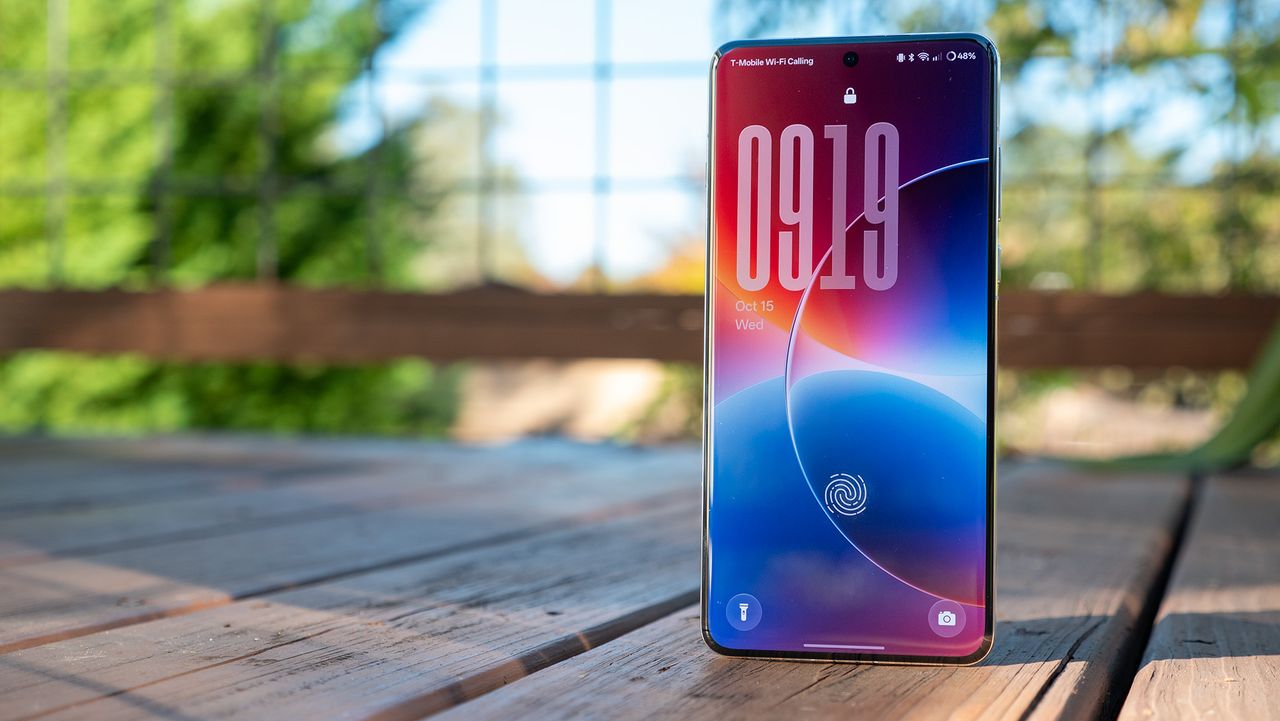

Android Central Labs is a weekly column devoted to deep dives, experiments, and a focused look into the tech you use. It covers phones, tablets, and everything in between.
When OnePlus started teasing its Android 16 update, I got a little bit nervous. Everything we'd seen officially from the company looked like it was just ripping off iOS, and I don't know about you, but that's not why I use a OnePlus phone.
Thankfully, what we'd been seeing are just new options that users can enable if they want. Like the split notification shade OnePlus introduced last year, this year's OxygenOS 16 offers users plenty of UI customization options and focuses intensely on the beautification of the entire experience.
That ranges from new lockscreen options, new animations, smoother performance, an updated theme engine, AI-powered photography options that are designed to make the camera even better than before, and plenty more! I've spent several days with OxygenOS 16 on my OnePlus 13 and came away super impressed with what's in store for users as it starts rolling out globally today.
Themes and lockscreen
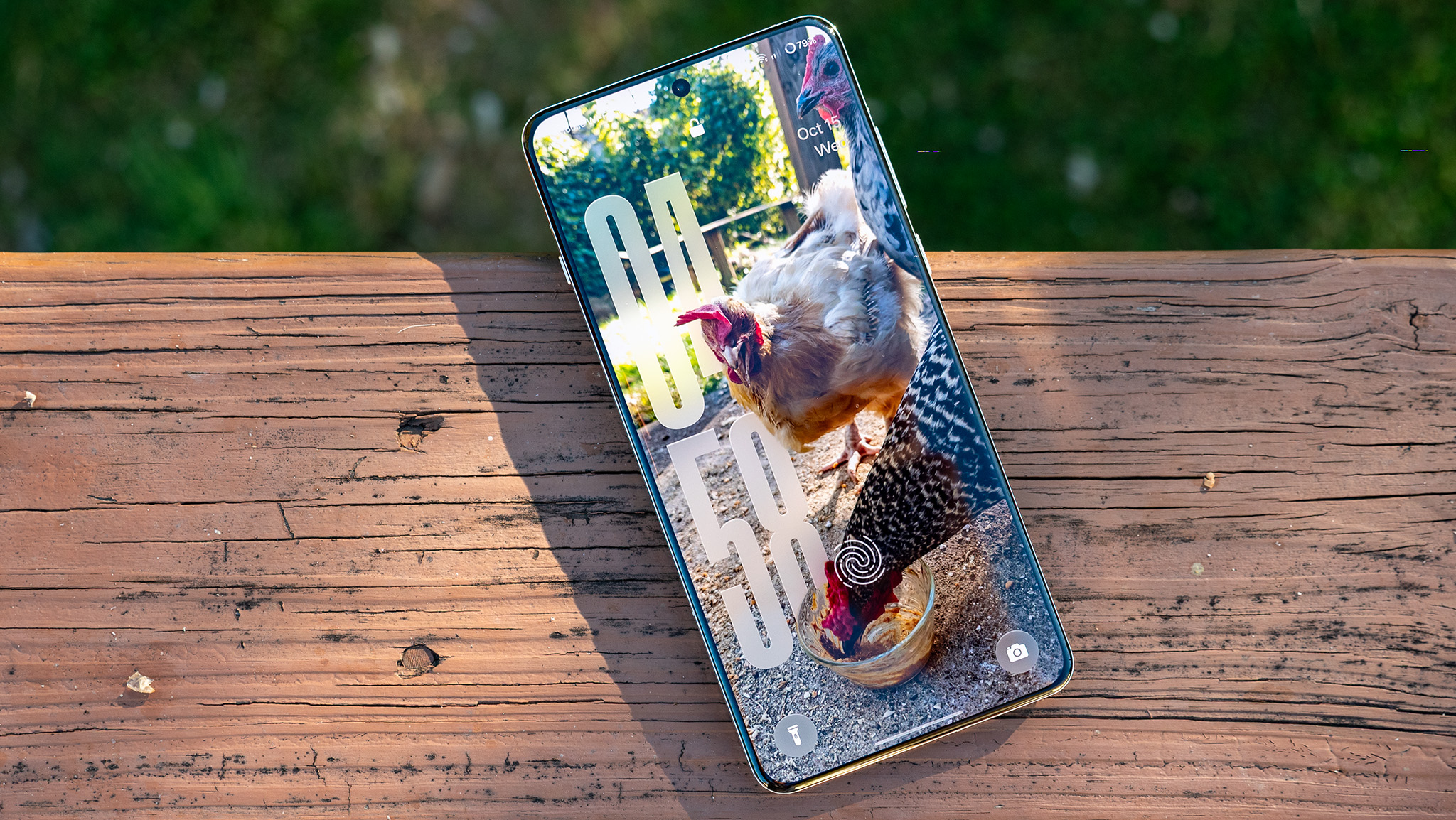
The first thing you're sure to notice is how much of a glow-up the theme engine and, by proxy, the lockscreen have received. When I first booted up the OxygenOS 16 update, I was greeted by a majestic mountain wallpaper complete with gorgeous new moving wallpaper effects and incredible depth.
OnePlus answered the call for users to customize the text on the lockscreen, so no more settling for just "Never Settle" or some other random word like "fast," as you had to in OxygenOS 15. Not only that, but you can select any motion photo taken with the camera and apply it to the lockscreen, complete with depth effects and movement. It's gorgeous and creates a whole new style you're going to spend hours tweaking.
Notification shade and homescreen
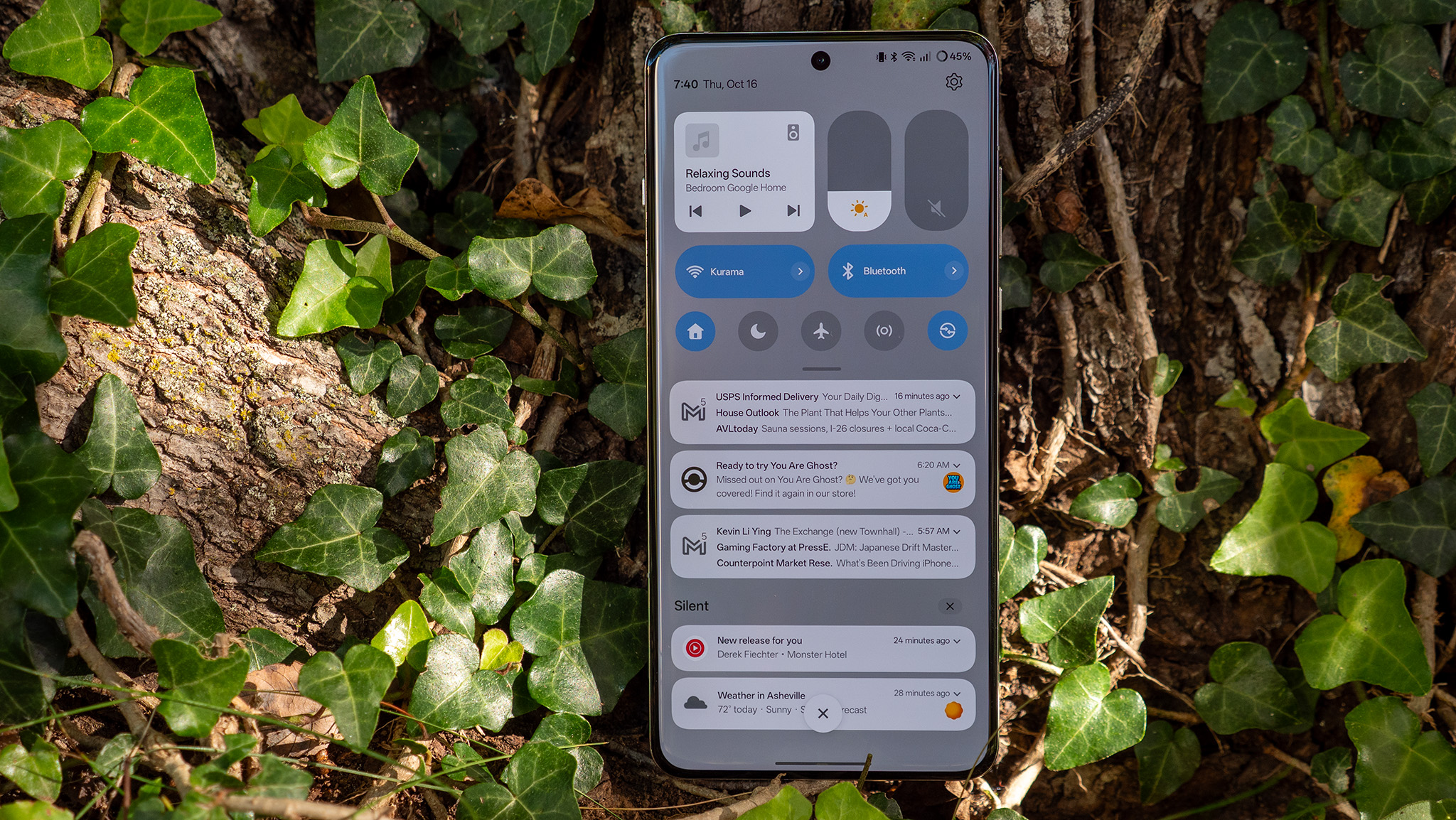
The lockscreen isn't the only thing getting a glow-up! Both the homescreen and notification shade have received some excellent tweaks. App icons are now prominently displayed on the left side of each notification, including an easy-to-see number for nofication groups.
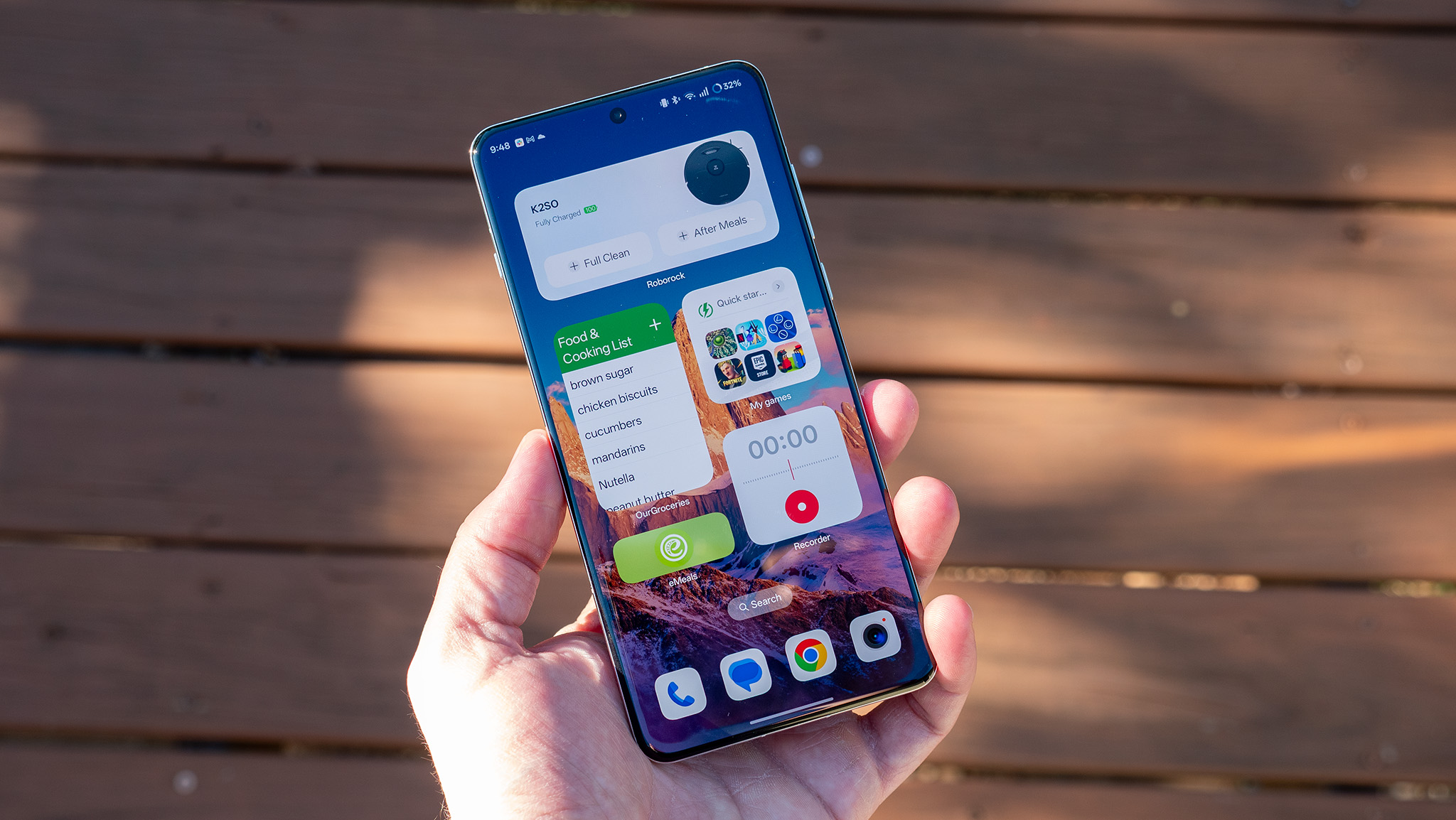
Homescreen icons can now be stretched to fit larger spaces. If you have just one icon and want to fill a gap, it'll turn into a lovely little colored button. Likewise, widgets now have a more rounded shape, giving them a more uniform appearance, but you can disable it if you don't like the new style.
The app drawer got a nice redesign too, adding a new categorical view you can swipe between that auto-categorizes apps into folders. I still prefer the alphabetized drawer, and the redesigned alphabetical scrolling wheel on the right now singles out each letter's apps instead of just scrolling through the drawer, helping to better isolate apps that start with each letter.
Animations
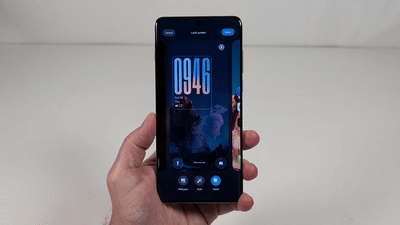
OnePlus made a big deal of animations in OxygenOS 15, and the company is doubling down with Parallel Processing 2.0, which allows new animations to begin before other ones have even finished. That ensures that fun animations complement each other instead of canceling out.
One of my favorite new animations is seeing apps slide outward when using the back gesture. You can play around with this by heading to system navigation in system settings, then enabling swipe animations. It's very fun and helps complete the feeling of a cohesive, fluid OS!
Better portraits
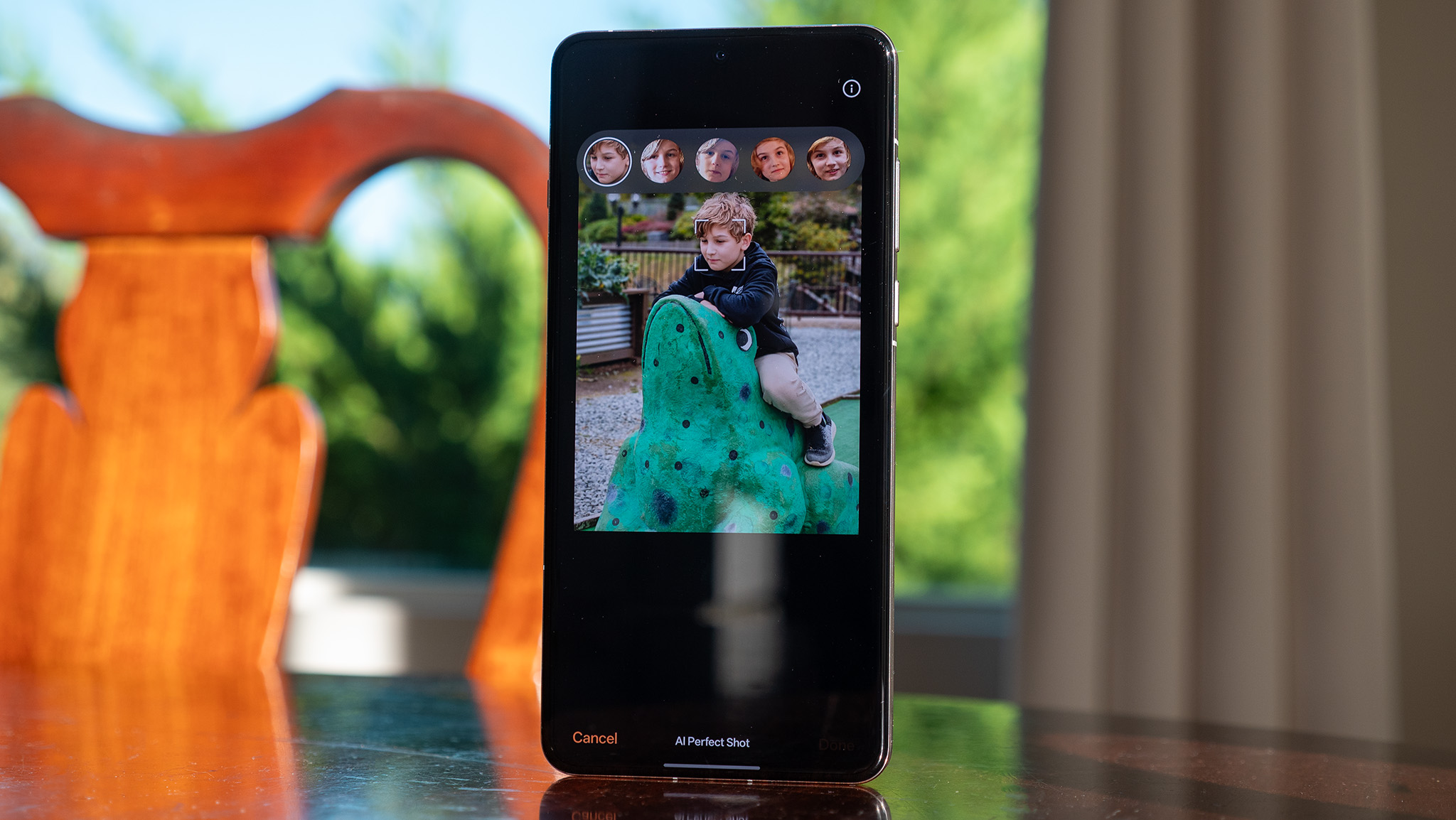
I've found that the OnePlus 13 often takes excellent portrait photos, but there are a few times when I hope for better results. OxygenOS 16 adds a ton of new portrait enhancement features, including much-needed post-processing options that let you adjust the amount of blur and lighting on foreground objects and people.
You can edit any photo taken previously, so these new features work on both new and existing photos. Speaking of older photos, people who have a vast catalog of photos on their OnePlus phones will find the new Perfect Shot feature to be a godsend. Tapping Perfect Shot will scan your gallery (assuming you gave it permission) for similar faces, then offer alternative expressions based on that person's other pictures.
It's similar to Google's Best Take feature, but it doesn't just work on photos taken in a single group burst. This is the perfect solution for those of us with teenagers or pre-teens who never seem to want to smile, as you can pretty easily swap out that angsty stare with a nice smile if you've got a few sitting in your gallery. It feels like magic!
Mind Space
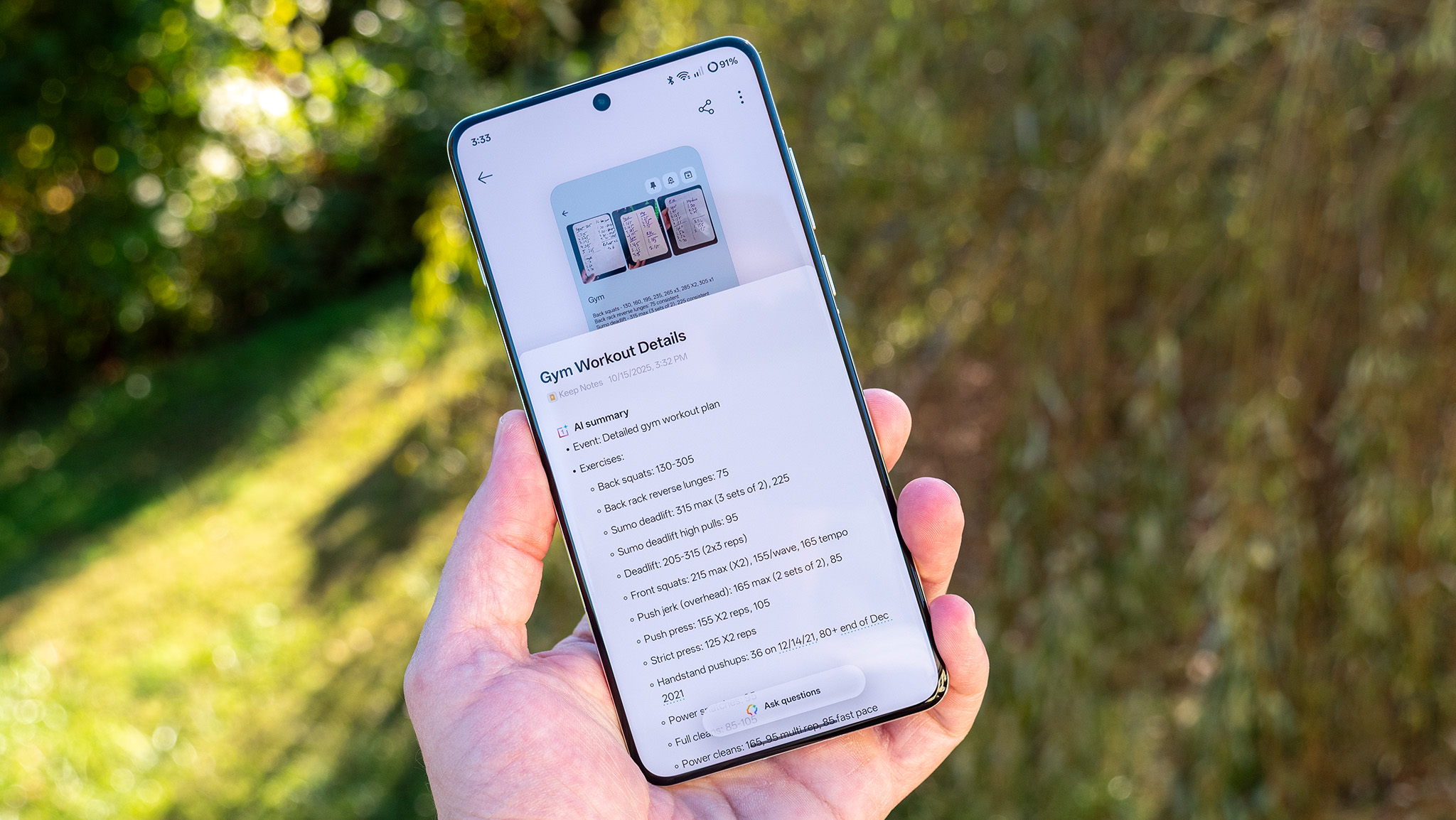
OnePlus may have launched Mind Space with the middling OnePlus 13S a few months ago, but this is the first time I'm getting to use it on my standard OnePlus 13. While I'm hoping OnePlus adds a few more ways to quickly get to Mind Space on phones without a dedicated side key, it's easy enough to three-finger swipe down to capture anything and send it to Mind Space on this phone.
Accessing it via a quick icon on the homescreen is also fine enough, but it's what's inside that I'm really loving. Ever since Nothing launched Essential Space with the Nothing Phone 3a series back in the Spring, other Android OEMs have been adding a similar feature that works even better than Nothing's design. Like Essential Space, OnePlus's Mind Space app is a central repository for all your note-taking and screenshot-searching needs.
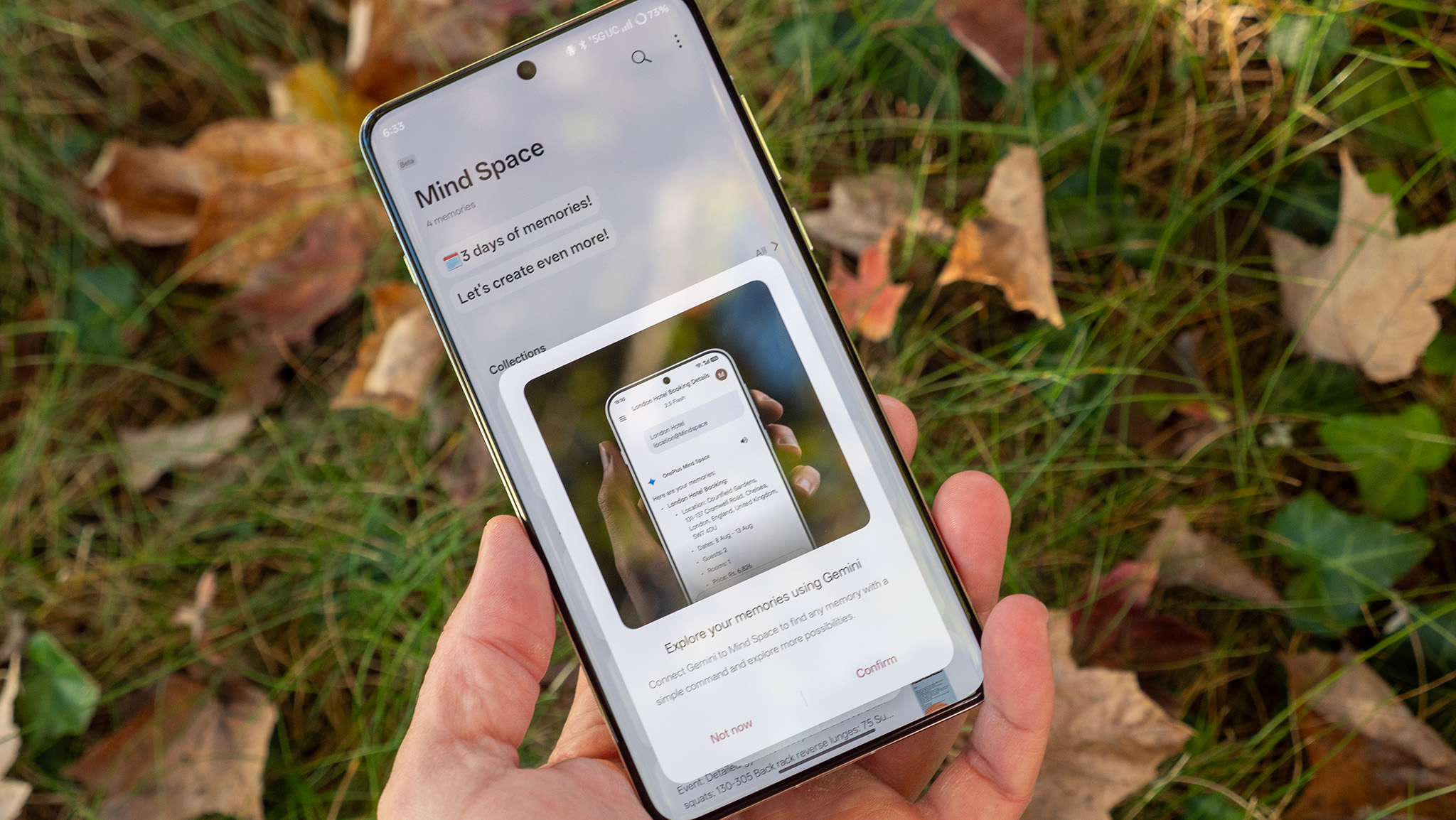
The key difference here is that, while things are easily searchable on the Pixel Screenshots app for Pixel 9 and Pixel 10 phones, Mind Space is the first app of its kind to directly integrate into Gemini. That means you don't even have to open the app to start a search. Just ask Gemini and it'll organize everything for you!
Mind Space is also very handy for summarizing or organizing information, and can even create charts and visuals based on information you store in it. This is awesome for me, as I often take notes for briefings or interviews and then have to comb through them later to organize them. Mind Space was able to take one of these documents and turn it into a visual flow chart, giving me a quick way to organize all my thoughts.
My next request for OnePlus is to allow it to store longer documents and make importing documents to Mind Space easier than just sharing what's on screen.
Voice recorder upgrades
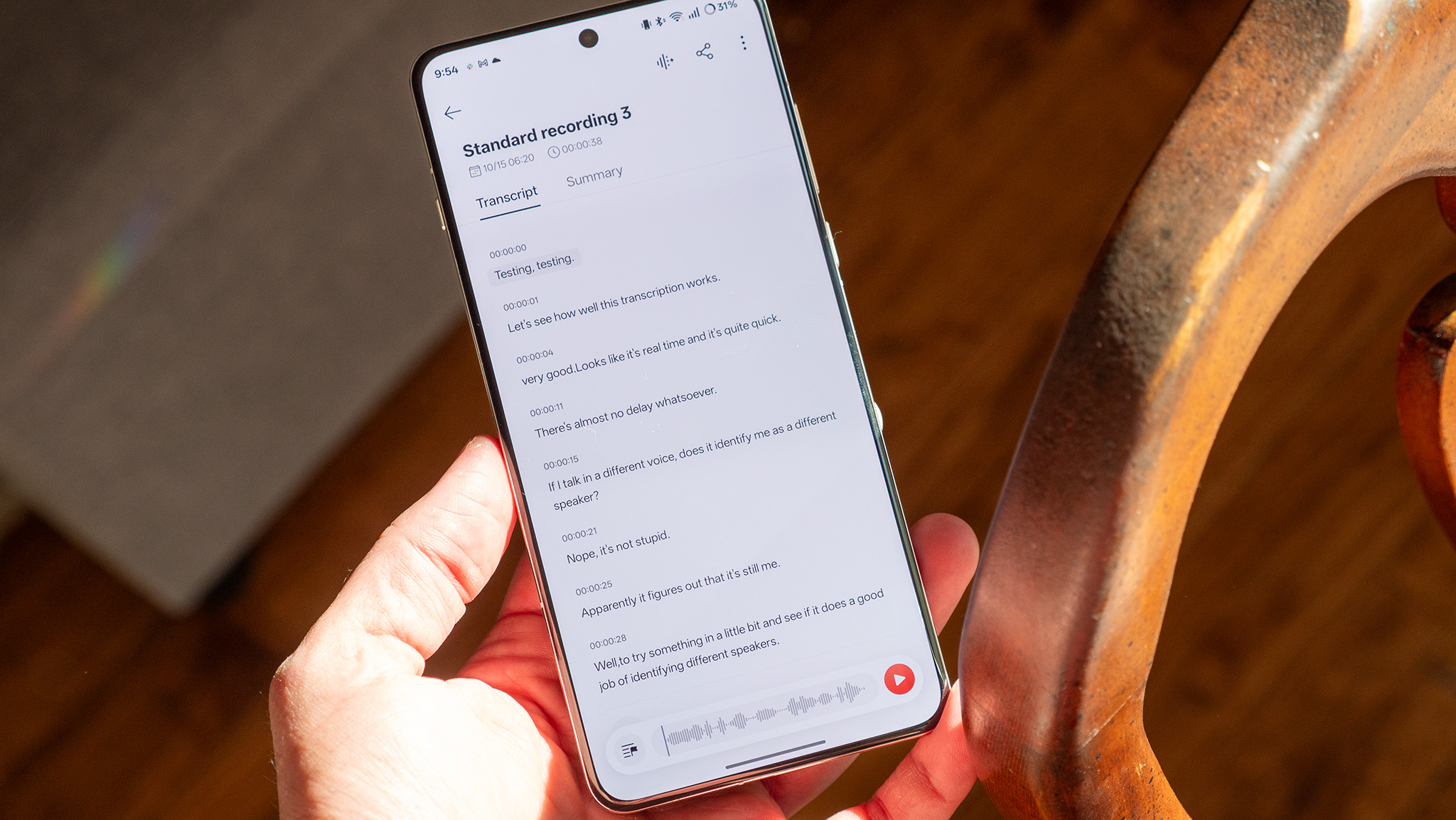
Voice Recorder got a massive upgrade in OxygenOS 16. While the previous version was fine enough, it lacked some of the more impressive AI-based features like automatic transcription and speaker identification. All that is here now, and it works beautifully.
You can even go back and transcribe previous recordings you made, making this update even more useful. That transcription can then be summarized, shared, or edited any way you like, which is great because it means I'll no longer have to carry another phone or use another app just to get transcription for my recordings.
Games games games
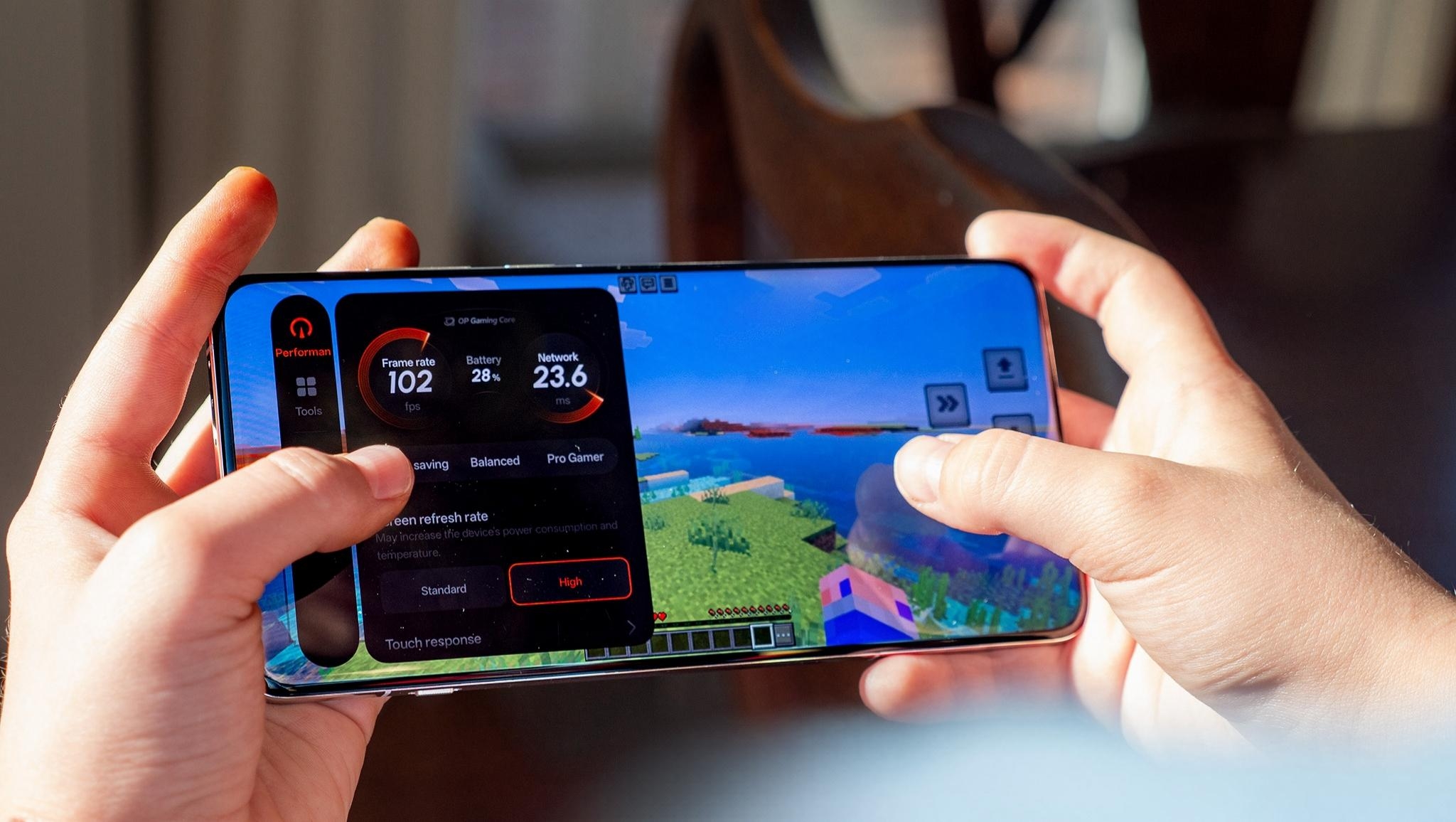
evenGames are finally, finally running at full speed in OxygenOS 16, with proper 120FPS support for any game that can push those limits. This is part of a total overhaul OnePlus did to enhance fluidity and speed for this release, and it includes a big upgrade for the Game Assistant tool built into the phone.
This tool features a metric ton of options now, including better profiles that help scale performance based on your needs. Game Assistant even does great things like organize all your screenshots and recordings into albums for each game, making it simple to find what you need, well after playing them.
Still the best multitasking in the biz
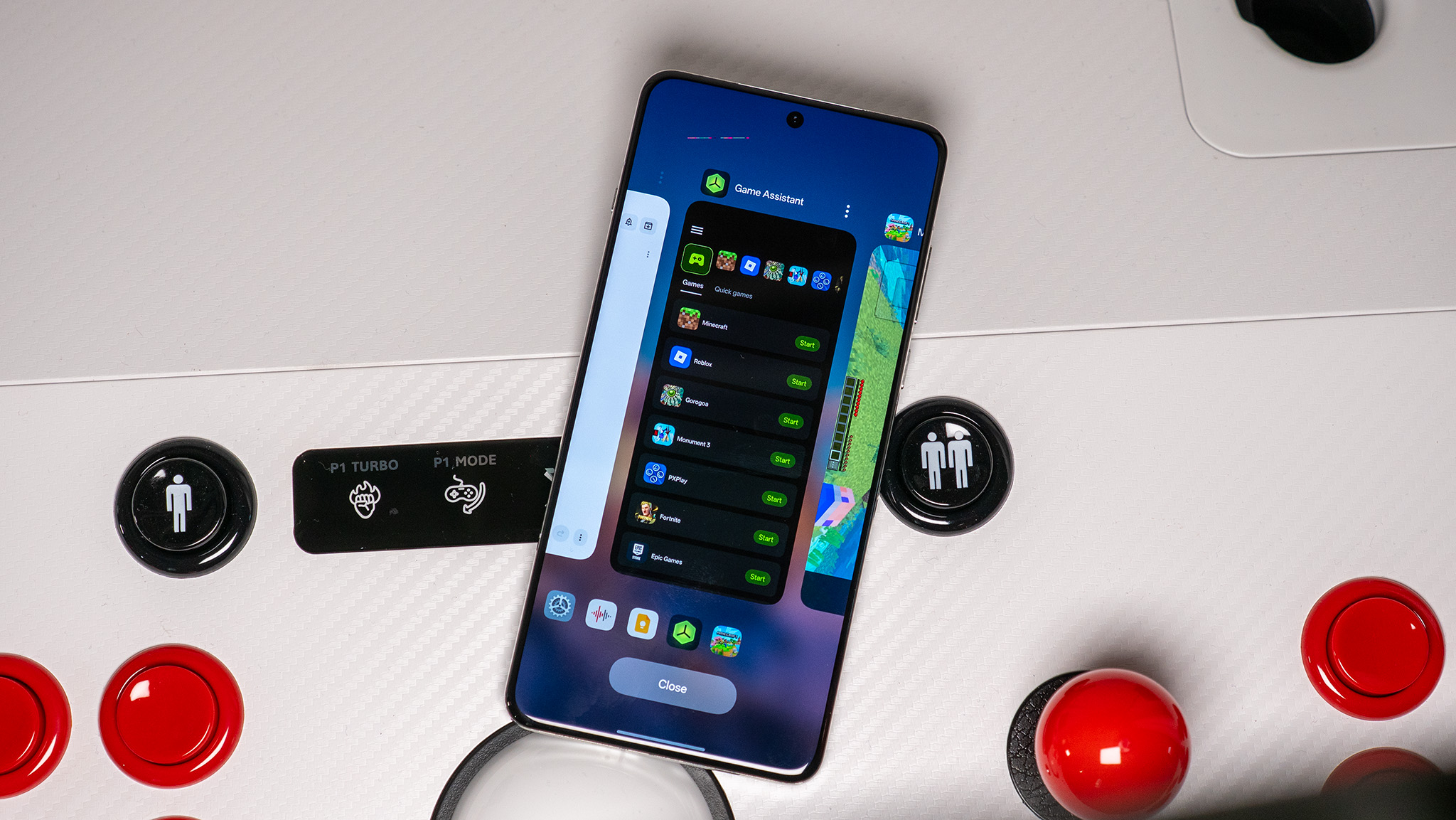
OnePlus dropped a teaser for the upcoming OnePlus 15 running OxygenOS 16 the other day, and it had me worried. The only multitasking UI shown was a blatant iOS ripoff, which is a big downgrade from the current best multitasking UI that OxygenOS already features. Thankfully, this lame iOS ripoff version seems to just be an optional toggle rather than a replacement.
OnePlus has long had the best multitasking UIs, whether that's the ultra-fast overview screen that lets you swap between 10 apps at a time with a single swipe, or the company's incredible Open Canvas feature that debuted with the OnePlus Open two years ago.
In fact, OnePlus Pad 3 users running OxygenOS 16 now have access to a whopping 18 apps on the bottom dock, and Open Canvas has now been upgraded to support 5-app splitscreen at the same time. Talk about hardcore multitasking!
And more!
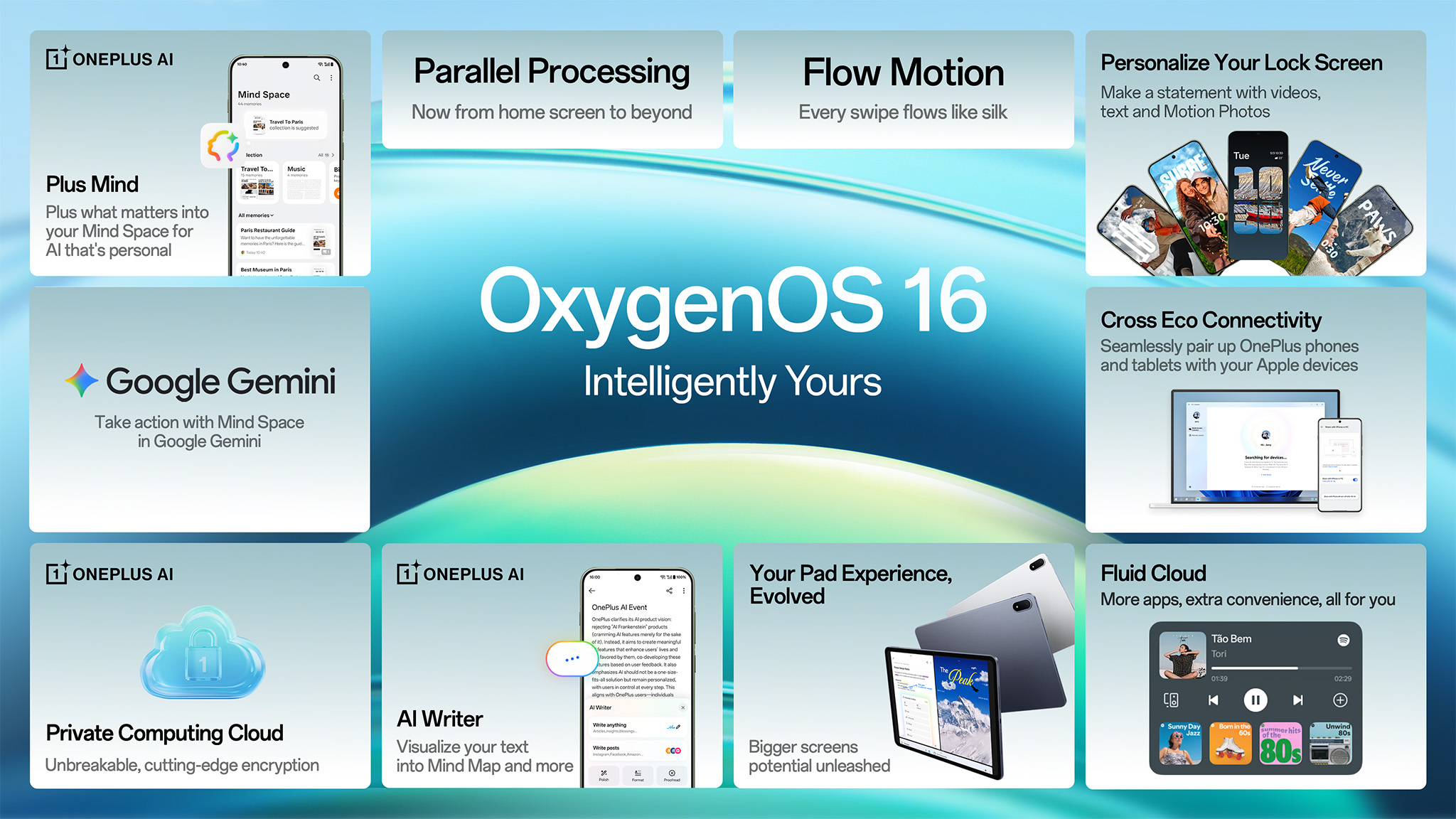
There are a lot of new features in OxygenOS 16 that I didn't touch on here that are worth looking at. From the AI writing functionality to the enhanced "Fluid Cloud" (that's OnePlus's version of Dynamic Island) and several other features, this is a jam-packed release that people are going to love.
OxygenOS 16 is just the first of five major updates scheduled for the OnePlus 13, the best Android smartphone we've ever reviewed. Get ready for speed and versatility with this blue beauty in your pocket!







